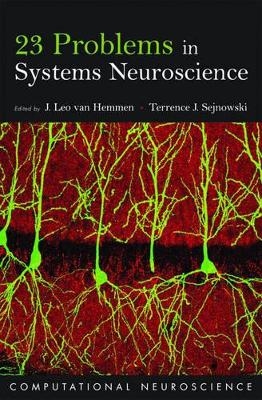
23 Problems in Systems Neuroscience
Oxford University Press Inc (Verlag)
978-0-19-514822-0 (ISBN)
The complexity of the brain and the protean nature of behavior remain the most elusive area of science, but also the most important. van Hemmen and Sejnowski invited 23 experts from the many areas--from evolution to qualia--of systems neuroscience to formulate one problem each. Although each chapter was written independently and can be read separately, together they provide a useful roadmap to the field of systems neuroscience and will serve as a source of inspirations for future explorers of the brain.
Part I How have brains evolved? ; 1. Shall we ever understand the fly's brain? ; 2. Can we understand the action of brain in natural environments? ; 3. Hemisphere dominance of brain function-which functions are lateralized and why? ; Part II How is the cerebral cortex organized? ; 4. What is the function of the thalamus? ; 5. What is a neuronal map, how does it arise, and what is it good for? ; 6. What is fed back? ; Part III How do neurons interact? ; 7. How Can the Brain be so Fast? ; 8. What is the Neural Code? ; 9. Are single cortical neurons independent or are they obedient members of a huge orchestra? ; 10. What is the other 85% of V1 doing? ; Part IV What can brains compute? ; 11. Which computation runs in visual cortical columns? ; 12. Are neurons adapted for specific computations? Examples from temporal coding in the auditory system ; 13. How is time represented in the brain? ; 14. How general are neural codes in sensory systems? ; 15. How does the hearing system perform auditory scene analysis? ; 16. How does our visual system achieve shift and size invariance? ; 17. What is reflected in sensory neocortical activity: External stimuli or what the cortex does with them? ; 18. Do perception and action result from different brain circuits? The three visual systems hypothesis ; 19. What are the projective fields of cortical neurons? ; 20. How are the features of objects integrated into perceptual wholes that are selected by attention? ; 21. Where are the switches on this thing? ; 22. Synesthesia: What does it tell us about the emergence of qualia, metaphor, abstract thought and language? ; 23. What are the neural correlates of consciousness?
| Erscheint lt. Verlag | 5.1.2006 |
|---|---|
| Reihe/Serie | Computational Neuroscience Series |
| Zusatzinfo | 12 pp colour plates, numerous halftones and line drawings |
| Verlagsort | New York |
| Sprache | englisch |
| Maße | 236 x 160 mm |
| Gewicht | 887 g |
| Themenwelt | Geisteswissenschaften ► Psychologie ► Allgemeine Psychologie |
| Geisteswissenschaften ► Psychologie ► Verhaltenstherapie | |
| Naturwissenschaften ► Biologie ► Humanbiologie | |
| Naturwissenschaften ► Biologie ► Zoologie | |
| ISBN-10 | 0-19-514822-3 / 0195148223 |
| ISBN-13 | 978-0-19-514822-0 / 9780195148220 |
| Zustand | Neuware |
| Informationen gemäß Produktsicherheitsverordnung (GPSR) | |
| Haben Sie eine Frage zum Produkt? |
aus dem Bereich


